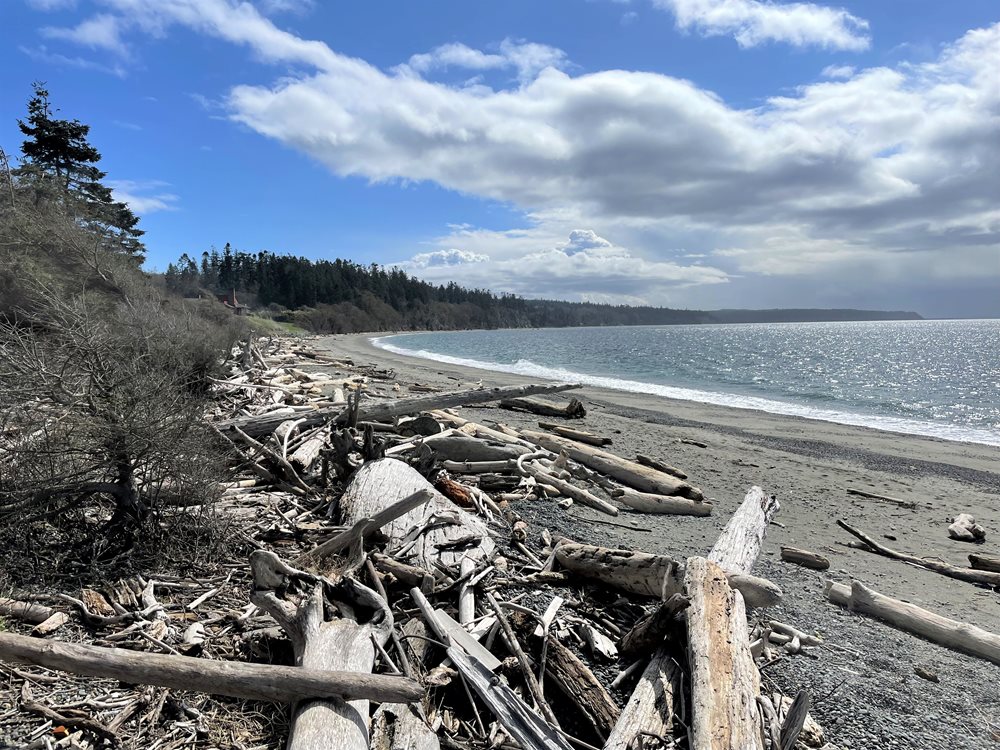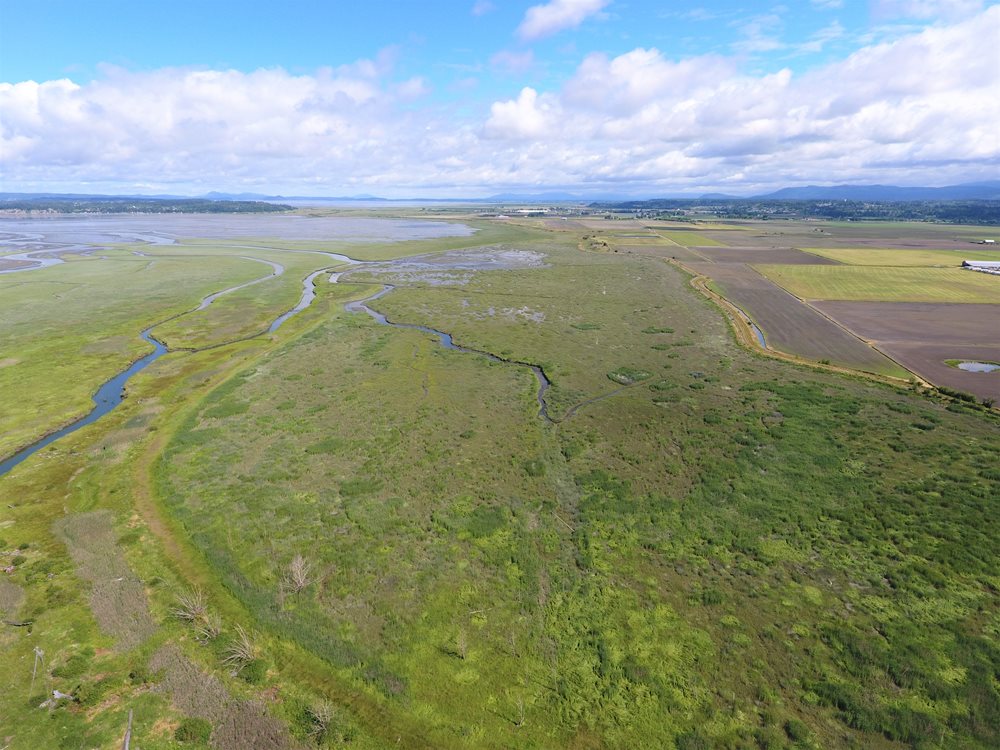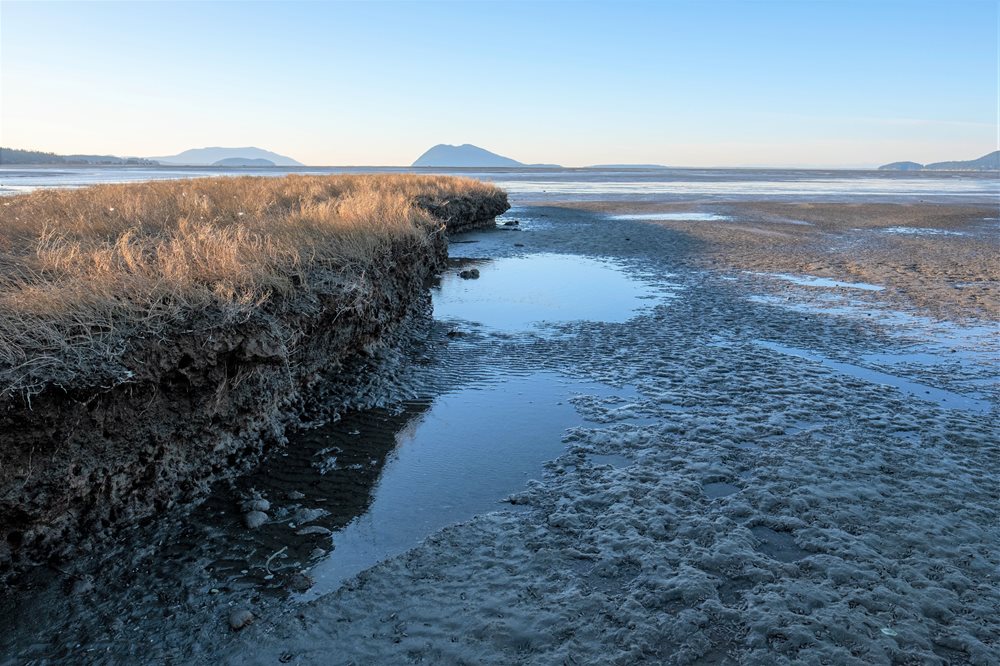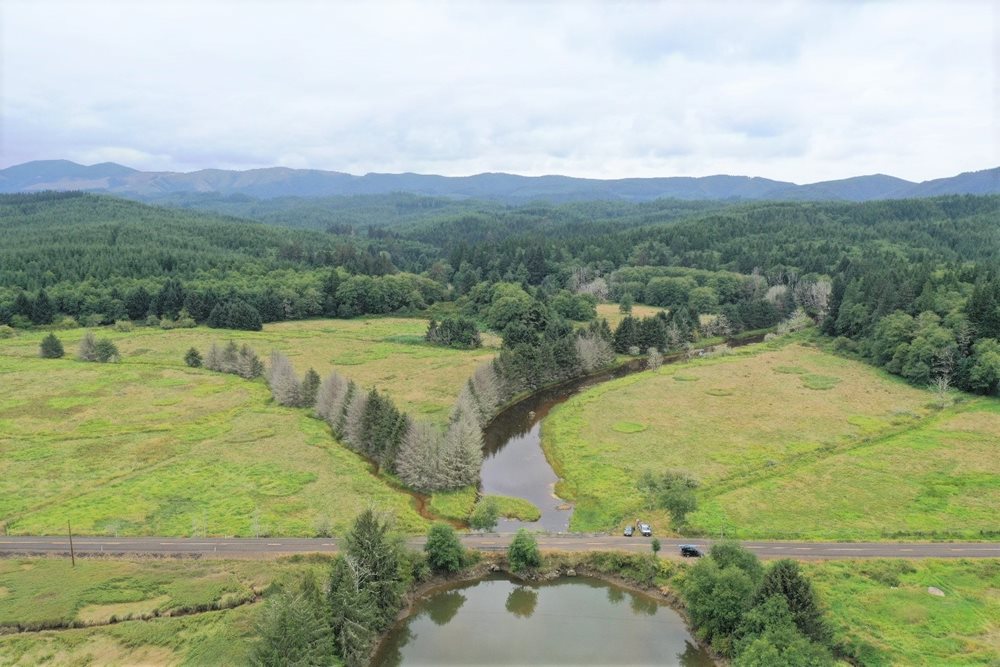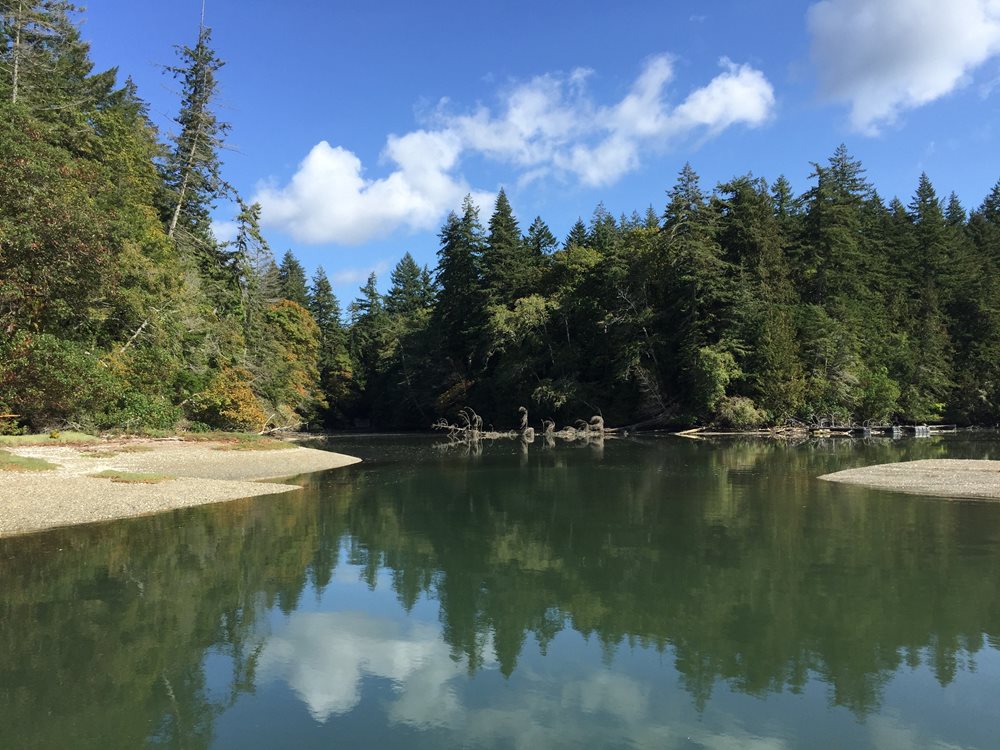
Hudson Cove Habitat Protection Project photo courtesy of Capitol Land Trust
We are thrilled to announce we've helped secure close to $6 million out of nearly $19 million — about 30% — in National Coastal Wetlands Conservation Grants to protect about 855 acres of coastal wetland habitat in Jefferson, Island, Pacific, Skagit, Snohomish, and Thurston counties.
Since 1992, we've been successful in receiving over $82 million in federal wetland conservation grants under the U.S. Fish and Wildlife Service program. This has allowed us to help conserve over 16,000 acres of coastal wetlands in the state.
Sometimes referred to as the “kidneys” of a watershed, wetlands are renowned for improving water quality by removing excess nutrients, toxic substances, and sediments from the water that flows through them.
Wetlands help safeguard the overall health of community water supplies by helping filter and slowly recharge underground sources of water. Wetlands help reduce flood damages by soaking up rain and storing flood waters. These ecosystems provide critical habitat for plants, wildlife, and fish, including salmon. Wetlands are an effective and economical way to enhance community safety while improving quality of life.
Coastal wetlands often rival tropical rain forests and coral reefs as some of the most diverse, productive ecosystems on the planet. They include estuarine salt marshes as well as freshwater wetlands that extend inland within a watershed.
While only U.S. states and territories can apply for the federal conservation grants, we work closely with our partners in local and tribal governments, as well as conservation organizations, to identify projects and develop wetland restoration and protection proposals for the federal government to consider.
Funded in part through taxes paid on fuel and equipment purchases by recreational anglers and boaters, the federal National Coastal Wetland Conservation grant federal program provides up to $1 million for individual wetland projects.
Projects receiving funding in 2023:
- Hudson Cove Habitat Protection
- Keystone Farm and Forest Acquisition
- Port Susan Bay Tidal Wetland Restoration
- Samish Bay Coastal Protection
- Smith Creek Tidal Habitat Restoration
- Tarboo Wildlife Preserve Acquisition and Restoration
Hudson Cove Habitat Protection ($1 million)
We’re working in collaboration with Capitol Land Trust to acquire a conservation easement of more than 227 acres of mostly undeveloped marine shoreline, pocket estuary, salt marsh, and forested habitat on the Steamboat Peninsula in Thurston County. The property hosts 8,500 feet of forested shoreline on Totten Inlet, a 7.8-acre pocket estuary known locally as Hudson Cove, plus 4,745 feet of perennial and seasonal streams, for a total of over 2.5 miles of marine and freshwater shoreline.
Hudson Cove provides important habitat for juvenile chinook, steelhead, and coho salmon as they seek sheltered areas in their transition to the saltwater environment, as well as spawning habitat for forage fish. In addition to feeder bluffs along much of the marine shoreline within the project site, Hudson Cove hosts salt marsh and mud flat habitat, which provide important nesting and foraging habitat for shorebirds and waterfowl.
Keystone Farm and Forest Acquisition ($1 million)
This project is in partnership with the Whidbey Camano Land Trust to acquire and permanently protect 210 acres of shoreline, forest, wetlands, and field habitat along Admiralty Inlet on Whidbey Island. The project will protect 3,500 feet of shoreline and tidelands, associated feeder bluffs, kelp and eelgrass beds, 50 acres of riparian area and open field habitat, and 160 acres of coastal forest.
The property encompasses a critical nearshore salmon migration corridor along Admiralty Bay for Puget Sound salmon, including endangered chinook, threatened Hood Canal summer chum, and Endangered Species Act-listed steelhead species. It also includes habitat for protected rockfish species, as well as numerous birds and other wildlife.
Port Susan Bay Tidal Wetland Restoration ($1 million)
We’re working with The Nature Conservancy to support tidal wetland restoration work on 115 acres at the Conservancy's Port Susan Bay Preserve in the Stillaguamish Delta, south of Stanwood in Snohomish County. The Port Susan Bay Preserve encompasses estuary marsh and tidelands spanning the two distributary channels of the Stillaguamish River. The Preserve protects coastal wetlands integral to the continued support of a wide range of fish and wildlife, including salmonids, other fish species, shorebirds, waterfowl, and raptors.
Restoration will involve excavating new outlets to the bay, river distributary connections, distributary channels across the site, and an interior blind tidal network, along with creating mid- and high-marsh-zone habitat mounds.
The project aims to significantly improve estuarine habitat connectivity at a key location, creating functional linkages with adjacent conservation projects. The combined restoration work in this area could significantly increase viable habitat for Whidbey Basin salmon stocks and other species, and augment climate resilience.
Samish Bay Coastal Protection ($1 million)
In partnership with the Skagit Land Trust, this project will acquire and permanently conserve approximately 128 acres and 7,400 feet of marine and tidal river coastline along Samish Bay in northern Skagit County. The property is surrounded on three sides by Samish Bay and the tidally influenced mouth of Edison Slough, a freshwater river. It includes a fringe of estuarine wetlands that lie waterward of a dike, especially along the slough, and tidelands extend into the bay.
The property currently supports estuarine and freshwater wetlands, coastal shoreline along a salinity gradient, and tidelands. It has approximately 1.4 miles of saltwater shoreline and 100 acres of nationally declining wetlands.
Smith Creek Tidal Habitat Restoration ($1 million)
We are partnering with the Pacific Conservation District to restore approximately 140 acres of coastal wetland habitat in Pacific County. The project will permanently restore nationally declining wetland habitat by removing a pair of tide-gated culverts and replacing them with a 100-foot bridge to restore the full tidal prism at the mouth of Smith Creek, near its confluence with the Lower Naselle River in Willapa Bay.
Tidal channels will be re-established. The project will increase connectivity and migratory access for salmonids and other estuary rearing species to foraging opportunities within 140 acres of restored intertidal habitat and to 8.7 miles of spawning habitat upstream, which is currently blocked by the tide gates. The project expands upon prior acquisition projects funded by the National Coastal Wetlands Conservation Grant Program, and it will complete the long-intended restoration of this critically important ecosystem.
Tarboo Wildlife Preserve Acquisition and Restoration ($689,000)
In collaboration with the Northwest Watershed Institute, this project will acquire and restore 35 acres along Tarboo Creek's tributaries and wetlands as an addition to the Tarboo Wildlife Preserve in Jefferson County. The project will permanently protect a diversity of wetlands, streams, and mature forest that provide habitat for a diversity of at-risk birds and wildlife. Three acres of wetlands with invasive reed canary grass will also be restored by the Institute and volunteers during educational events.
The project will safeguard habitat and water quality in downstream Tarboo Creek and Dabob Bay for at-risk aquatic species, including steelhead, chinook salmon, coho salmon, coastal cutthroat trout, and western brook lamprey.


